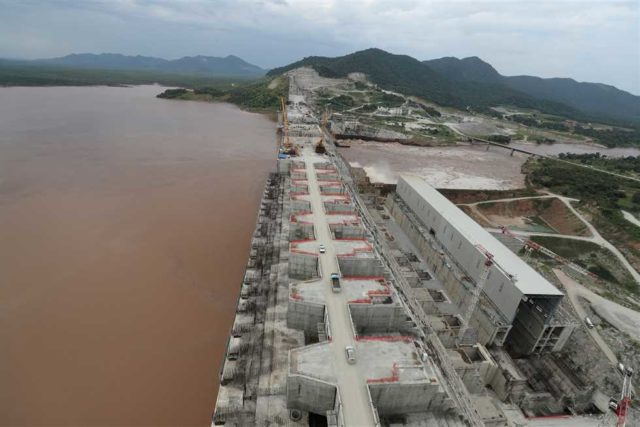- Ethiopia has denied reports it is filling the reservoir of Africa’s largest dam on the Nile even though satellite images taken between 27 June and 12 July 2020 show a steady increase in the amount of water being held back by the new mega-dam.
- Egypt and Sudan, the two countries downstream of the Grand Ethiopian Renaissance Dam GERD reservoir, are unhappy about this development, as the timetable for filling it is yet to be agreed at deadlocked negotiations.
According to media sources, Ethiopian Minister of Water and Irrigation Seleshi Bekele has rebutted the accusation, blaming rising rater levels at the GERD reservoir on heavy seasonal rains.
“There is a lot of water going through. There is heavy rainfall and the inflow is much greater than the outflow,” Seleshi said.
However, Sudan’s Water Ministry responded saying relevant agencies had measured water levels of the Blue Nile and confirmed they were down.
According to a statement from the Ministry: “It was evident from the flow meters in the Dimim border station with Ethiopia that there is a retreat in the water levels, equivalent to 90 million cubic meters per day, confirming the closure of the gates of the Renaissance Dam”.
Sudan’s ministry will be conducting further investigations based on the satellite images and rejects any unilateral actions taken by any party as negotiating efforts continue.

Satellite images were taken on Friday, 26 June 2020 (top) and Sunday, 12 July 2020 (bottom) shows the Grand Ethiopian Renaissance Dam on the Blue Nile river in the Benishangul-Gumuz region of Ethiopia. New satellite imagery shows the reservoir behind Ethiopia’s disputed hydroelectric dam beginning to fill, but an analyst says it’s likely due to seasonal rains instead of government action. (Image credit: Maxar Technologies via AP)
Ethiopia has been building the dam since 2010, leading to tensions with Egypt and Sudan. The contention surrounds Sudan and Egypt’s fears that the $4 billion dam could lead to water shortages in their own territories. Negotiations reached deadlock recently, with Egypt referring the matter to the UN Security Council.
Egyptian President Abdel Fattah al-Sisi also warned Ethiopia about acting unilaterally. He seeks a legally binding deal that would guarantee the appropriate flows of water and a legal mechanism for resolving disputes before the dam starts operating. This will ensure the Nile water is protected, a valuable resource for Egypt’s economic activities.
South African President and President of the African Union, Cyril Ramaphosa, has also been trying to ease negotiations and ensure a satisfactory resolution for all parties.
Once the filling – done manually or naturally – is over, however, Ethiopia is reluctant to be tied to a figure of how much water to release from the GERD reservoir, as when fully operational, the dam will become the largest hydro-electric plant in Africa.
When complete, the dam will have an installed capacity of 6,450MW – more than doubling Ethiopia’s existing capacity – and is the centrepiece of the country’s bid to become Africa’s biggest power exporter
Author: Pamela Largue
This article was originally published on ESI Africa and is republished with permission with minor editorial changes.















